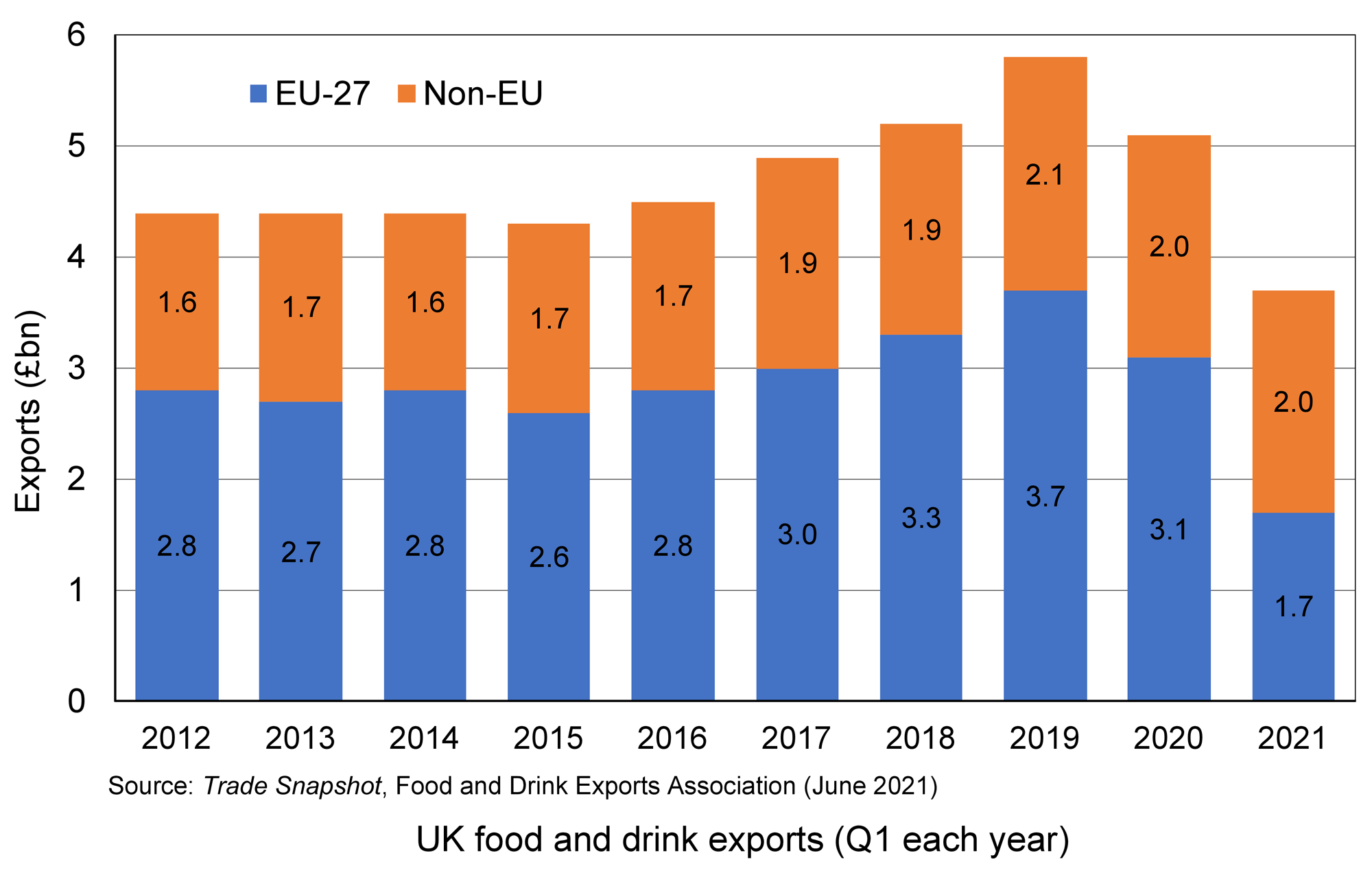 The coronavirus pandemic and the climate emergency have highlighted the weaknesses of free-market capitalism.
The coronavirus pandemic and the climate emergency have highlighted the weaknesses of free-market capitalism.
Governments around the world have intervened massively to provide economic support to people and businesses affected by the pandemic through grants and furlough schemes. They have also stressed the importance of collective responsibility in abiding by lockdowns, social distancing and receiving vaccinations.
The pandemic has also highlighted the huge inequalities around the world. The rich countries have been able to offer much more support to their people than poor countries and they have had much greater access to vaccines. Inequality has also been growing within many countries as rich people have gained from rising asset prices, while many people find themselves stuck in low-paid jobs, suffering from poor educational opportunities and low economic and social mobility.
The increased use of working from home and online shopping has accelerated the rise of big tech companies, such as Amazon and Google. Their command of the market makes it difficult for small companies to compete – and competition is vital if capitalism is to benefit societies. There have been growing calls for increased regulation of powerful companies and measures to stimulate competition. The problem has been recognised by governments, central banks and international agencies, such as the IMF and the OECD.
 At the same time as the world has been grappling with the pandemic, global warming has contributed to extreme heat and wildfires in various parts of the world, such as western North America, the eastern Mediterranean and Siberia, and major flooding in areas such as western Europe and China. Governments again have intervened by providing support to people whose property and livelihoods have been affected. Also there is a growing urgency to tackle global warming, with some movement, albeit often limited, in implementing policies to achieve net zero carbon emissions by some specified point in the future. Expectations are rising for concerted action to be agreed at the international COP26 climate meeting in Glasgow in November this year.
At the same time as the world has been grappling with the pandemic, global warming has contributed to extreme heat and wildfires in various parts of the world, such as western North America, the eastern Mediterranean and Siberia, and major flooding in areas such as western Europe and China. Governments again have intervened by providing support to people whose property and livelihoods have been affected. Also there is a growing urgency to tackle global warming, with some movement, albeit often limited, in implementing policies to achieve net zero carbon emissions by some specified point in the future. Expectations are rising for concerted action to be agreed at the international COP26 climate meeting in Glasgow in November this year.
An evolving capitalism
So are we seeing a new variant of capitalism, with a greater recognition of social responsibility and greater government intervention?
 Western governments seem more committed to spending on socially desirable projects, such as transport, communications and green energy infrastructure, education, science and health. They are beginning to pursue more active industrial and regional policies. They are also taking measures to tax multinationals (see the blog The G7 agrees on measures to stop corporate tax avoidance). Many governments are publicly recognising the need to tackle inequality and to ‘level up’ society. Active fiscal policy, a central plank of Keynesian economics, has now come back into fashion, with a greater willingness to fund expenditure by borrowing and, over the longer term, to use higher taxes to fund increased government expenditure.
Western governments seem more committed to spending on socially desirable projects, such as transport, communications and green energy infrastructure, education, science and health. They are beginning to pursue more active industrial and regional policies. They are also taking measures to tax multinationals (see the blog The G7 agrees on measures to stop corporate tax avoidance). Many governments are publicly recognising the need to tackle inequality and to ‘level up’ society. Active fiscal policy, a central plank of Keynesian economics, has now come back into fashion, with a greater willingness to fund expenditure by borrowing and, over the longer term, to use higher taxes to fund increased government expenditure.
But there is also a growing movement among capitalists themselves to move away from profits being their sole objective. A more inclusive ‘stakeholder capitalism’ is being advocated by many companies, where they take into account the interests of a range of stakeholders, from customers, to workers, to local communities, to society in general and to the environment. For example, the Council for Inclusive Capitalism, which is a joint initiative of the Vatican and several world business and public-sector leaders, seeks to make ‘the world fairer, more inclusive, and sustainable’.
If there is to be a true transformation of capitalism from the low-tax free-market capitalism of neoclassical economists and libertarian policymakers to a more interventionist mixed market capitalism, where capitalists pursue a broader set of objectives, then words have to be matched by action. Talk is easy; long-term plans are easy; taking action now is what matters.
Articles and videos
- Why the next stage of capitalism is coming
BBC Future, Matthew Wilburn King (27/5/21)
- During the pandemic, a new variant of capitalism has emerged
The Guardian, Larry Elliott (30/7/21)
- When it comes to social and environmental justice, words don’t cut it
GreenBiz, C J Clouse (28/4/21)
 Introducing the Council for Inclusive Capitalism with the Vatican
Introducing the Council for Inclusive Capitalism with the VaticanInclusive Capitalism (7/12/20)
- The State and Direction of Inclusive Capitalism
Saïd Business School, Ford Foundation and Deloitte Social Impact practice, Richard Barker, Mary Johnstone-Louis, Colin Mayer, Pradeep Prabhala, Noah Rimland Flower, Theodore Roosevelt Malloch, Tony Siesfeld and Peter Tufano (2018)
- Rising Market Power—A Threat to the Recovery?
IMF Blog, Kristalina Georgieva, Federico J Díez, Romain Duval and Daniel Schwarz (15/3/21)
- The Pandemic Alone Can’t Transform Capitalism
Jacobin, Ramaa Vasudevan (30/7/21)
- Down to earth: How entrepreneurs can collaborate to rejuvenate capitalism
EU-Startups, Luca Sabia (4/8/21)
Questions
- How similar is the economic response of Western governments to the pandemic to their response to the financial crisis of 2007–8?
- What do you understand by ‘inclusive capitalism’? How can stakeholders hold companies to account?
- What indicators are there of market power? Why have these been on the rise?
- How can entrepreneurs contribute to ‘closing the inequality gap for a more sustainable and inclusive form of society’?
- What can be done to hold governments to account for meeting various social and environmental objectives? How successful is this likely to be?
- Can inequality be tackled without redistributing income and wealth from the rich to the poor?
 In a post at the end of 2019, we looked at moves around the world to introduce a four-day working week, with no increase in hours on the days worked and no reduction in weekly pay. Firms would gain if increased worker energy and motivation resulted in a gain in output. They would also gain if fewer hours resulted in lower costs.
In a post at the end of 2019, we looked at moves around the world to introduce a four-day working week, with no increase in hours on the days worked and no reduction in weekly pay. Firms would gain if increased worker energy and motivation resulted in a gain in output. They would also gain if fewer hours resulted in lower costs.
Workers would be likely to gain from less stress and burnout and a better work–life balance. What is more, firms’ and workers’ carbon footprint could be reduced.
In New Zealand, Unilever has begun a one-year experiment to allow all 81 of its employees to work one day less each week and no more hours per day. This, it argues, might boost productivity and improve employees’ work-life balance.
 The biggest experiment so far has been in Iceland. From 2015 to 2019 more than 2500 people took part in a pilot programme (about 1 per cent of Iceland’s working population). This involved reducing the working week to four days and reducing hours worked from 40 hours per week to 35 or 36 hours with no reduction in weekly pay.
The biggest experiment so far has been in Iceland. From 2015 to 2019 more than 2500 people took part in a pilot programme (about 1 per cent of Iceland’s working population). This involved reducing the working week to four days and reducing hours worked from 40 hours per week to 35 or 36 hours with no reduction in weekly pay.
Analysis of the results of the trial, published in July 2021, showed that output remained the same or improved in the majority of workplaces.
As a result of agreements struck with unions since the end of the pilot programme, 86% of Iceland’s workforce have either moved to shorter hours for the same pay or will gain the right to do so.
Many companies and public-sector employers around the world are considering reducing hours or days worked. With working patterns having changed for many employees during the pandemic, employers may now be more open to rethinking ways of deploying their workforce more productively. And this may involve rethinking worker motivation and welfare.
Articles
Report
Questions
- Distinguish between different ways of measuring labour productivity.
- Summarise the results of the Iceland pilot.
- In what ways may reducing working hours reduce a firm’s total costs?
- What are the advantages and disadvantages of the government imposing (at some point in the future) a maximum working week or a four-day week?
- What types of firm might struggle in introducing a four-day week or a substantially reduced number of hours for full-time employees?
- What external benefits and costs might arise from a shorter working week?
 House prices are soaring throughout the world, making them unaffordable for many first-time buyers. In the UK, for example, according to the Nationwide, the annual house price increase was 13.4% in 2021 Q2. In the USA, house prices are rising by over 23% per annum.
House prices are soaring throughout the world, making them unaffordable for many first-time buyers. In the UK, for example, according to the Nationwide, the annual house price increase was 13.4% in 2021 Q2. In the USA, house prices are rising by over 23% per annum.
The reason for this rampant house price inflation is that demand is rising much faster than supply. What is more, with inelastic supply in the short term, a given percentage rise in demand leads to a larger percentage increase in prices.
Reasons for rapidly rising house prices
 But why has demand risen so rapidly? One major reason is that central banks have engaged in massive quantitative easing. This has driven down interest rates to historic lows and has led to huge asset purchases. Mortgage lenders, awash with money, have been able to increase the ratio of lending to income. Borrowing by house purchasers, encouraged by low interest rates and easy access to mortgages, has thus increased rapidly.
But why has demand risen so rapidly? One major reason is that central banks have engaged in massive quantitative easing. This has driven down interest rates to historic lows and has led to huge asset purchases. Mortgage lenders, awash with money, have been able to increase the ratio of lending to income. Borrowing by house purchasers, encouraged by low interest rates and easy access to mortgages, has thus increased rapidly.
Another reason for the increased demand is that economies are beginning to recover from the COVID-induced recessions. This makes people more confident about their future financial positions and more willing to take on increased mortgage debt. Another reason is that, with increased working from home, people are looking for larger houses where rooms can be used as studies. Another is that, with less spending during the lockdowns, people have built up savings, which can be used to buy larger homes.
Some countries have deliberately boosted demand by fiscal measures. In the UK, the government introduced a stamp duty ‘holiday’. Previously a 3% ‘stamp duty’ tax was applied to purchases over £125 000. Under the holiday scheme, the rate would only apply to purchases over £500 000 until 30 June 2021 and then to purchases over £250 000 until 30 September 2021. This massively boosted demand, especially as the deadlines approached. In the USA, there are various schemes at federal and state level to support first-time buyers, including low-interest loans and vouchers. Supporting demand is counterproductive if it merely leads to higher prices and thus does not make it easier for people to buy.
Speculation has played a major part too, with many potential purchasers keen to buy before prices rise further. On the supply side, some vendors have held back hoping to get a higher price by waiting. Gazumping has returned. This is where vendors accept a new higher offer even though they have already accepted a previous lower one.
Effects of higher house prices
Higher house prices have had a knock-on effect on rents, which have also soared. This has encouraged house purchases for rent both by individuals and by property investment companies. The effect of rapidly rising house prices and rents has been to increase the divide in society between property owners and those unable to afford to buy and forced to rent.
Increased housing wealth is likely to lead to greater housing equity withdrawal. This is where people draw on some of their equity in order to finance increased consumer spending, thereby boosting aggregate demand and possibly inflation.
Will the house price boom end soon?
 One scenario is that there will be a gradual slowdown in house price increases as quantitative easing is tapered off and as support measures, such as the UK’s stamp duty holiday, are unwound.
One scenario is that there will be a gradual slowdown in house price increases as quantitative easing is tapered off and as support measures, such as the UK’s stamp duty holiday, are unwound.
There is a real possibility, however, that there will be a more severe correction, with house prices actually falling. This could be triggered by central banks raising interest rates in response to higher inflation caused by the recovery and by higher commodity prices. In the UK, labour shortages brought about by Brexit could make the inflationary problem worse. With high levels of mortgage debt, even a half percentage point rise in mortgage interest rates could have a severe effect on demand. Falling house prices will then be compounded by speculation, with buyers holding off and sellers rushing to sell.
Articles
- “UK Boom the Biggest in 50 years” thanks to House Prices, but Oxford Economics Warn of Risks
PoundSterling Live, Gary Howes (18/6/21)
- US house prices see biggest rise in 30 YEARS and are outstripping Britain’s pandemic-fuelled boom: Is a global housing market bubble emerging?
This is Money, Helen Crane (1/7/21)
- House prices: urban exodus of upsizers shifts property demand
Business Telegraph (18/4/21)
- House prices rise at fastest pace in 17 years
BBC News (30/6/21)
- Runaway house prices: the ‘winners and losers’ from the pandemic
Financial Times, Delphine Strauss and Colby Smith (25/6/21)
- World’s Bubbliest Housing Markets Flash 2008 Style Warnings
Bloomberg, Enda Curran (15/6/21)
- House prices climb to record levels in US and Europe
Financial Times, Martin Arnold, Colby Smith and Matthew Rocco (22/6/21)
- With house prices through the roof, young buyers’ hopes go out the window
The Observer, Phillip Inman (3/7/21)
- Is the UK housing bubble about to burst? These are the best and worst scenarios
The Guardian, Josh Ryan-Collins (2/7/21)
- House prices: the risks of a fall are higher than most people think
The Conversation, Geoff Meen (28/6/21)
Data
Questions
- Use a supply and demand diagram to illustrate what has been happening to house prices. Illustrate the importance of the price elasticity of supply in the process.
- Under what circumstances might tax relief help or not help first-time buyers?
- Use a supply and demand diagram to illustrate the effect of speculation on house prices? Under what circumstances might speculation (a) make the market less stable; (b) help to stabilise the market?
- Explain what is meant by housing equity withdrawal. Using the Bank of England website, find out what has happened to housing equity withdrawal in the UK over the past 15 years. Explain.
- Under what circumstances would a sudden house price correction be more likely?
- Write a critique of housing policy in the light of growing inter-generational inequality of wealth.

Boeing and Airbus have called a truce in their 17-year battle over subsidies. During this period, both have accused each other of unfair government subsidies to their respective plane makers.
The long-running trade dispute
In October 2004, the USA requested the establishment of a WTO panel to consider whether Airbus was providing unfair subsidies to develop its new super-jumbo – the A380. This provoked a counter-request by Airbus, claiming unfair subsidies of $27.3 billion for Boeing by the US government since 1992. In July 2005, two panels were set up to deal with the two sets of allegations.
In June 2010, the WTO panel circulated its findings on Boeing’s case against Airbus. It found Airbus guilty of using some illegal subsidies to win contracts through predatory pricing, but dismissed several of Boeing’s claims because many of the subsidies were reimbursable at commercial rates of interest. However, some of the ‘launch aid’ for research and development was given at below market rates and so violated WTO rules. The report evoked appeal and counter-appeal from both sides, but the WTO’s Appellate Body reported in May 2011 upholding the case that ‘certain subsidies’ provided by the EU and member states were incompatible with WTO rules. In June 2011, the EU accepted the findings.
 In March 2011, the WTO panel circulated its findings on Airbus’s case against Boeing. The EU claimed that ten specific measures amounted to subsidies to Boeing, which were inconsistent with the WTO’s rules on subsidies (the SCM agreement). It upheld three of ten alleged breaches, including subsidies between 1989 and 2006 of at least $5.3 billion. These subsidies were adjudged to have resulted in adverse effects to the EU’s interests, specifically in lost sales, especially to third-country markets, and in significantly suppressing the price at which Airbus was able to sell its aircraft.
In March 2011, the WTO panel circulated its findings on Airbus’s case against Boeing. The EU claimed that ten specific measures amounted to subsidies to Boeing, which were inconsistent with the WTO’s rules on subsidies (the SCM agreement). It upheld three of ten alleged breaches, including subsidies between 1989 and 2006 of at least $5.3 billion. These subsidies were adjudged to have resulted in adverse effects to the EU’s interests, specifically in lost sales, especially to third-country markets, and in significantly suppressing the price at which Airbus was able to sell its aircraft.
But these rulings were not the end of the matter. Various appeals and counter-appeals were lodged by both sides with varying degrees of success. Also the disputes extended to other wide-bodied jets and to narrow-bodied ones too with claims by both sides of unfair subsidies and tax breaks.
On 9 June 2017 the WTO’s compliance panel rejected several EU claims that the USA had failed to withdraw all illegal subsidies to Boeing. However, it also found that the USA had not complied with an earlier ruling to abolish illegal tax breaks. Both sides claimed victory. Airbus claimed that the ruling had seen the WTO condemn non-compliance and new subsidies. In particular, it focused on the WTO ruling that Washington State subsidies had resulted in a significant loss of sales for Airbus. On the other hand, a Boeing press release spoke of a US win in a major WTO compliance ruling. Boeing claimed that that ruling meant that the United States had complied with ‘virtually all’ of the WTO’s decisions in the counter-case that the EU had filed against the USA in 2006.
On 27 June 2017, as expected, the EU challenged the WTO decision. This meant that the EU’s case would go back to the WTO’s appellate body, which was still considering a separate US case over state aid to Airbus.
On 15 May 2018, the WTO ruled that Airbus did not use unfair subsidies for narrow-bodied jets, such as the A320, which competes with the 737, but did for wide-bodied jets. The EU said that it would comply with the WTO ruling over the support for wide-bodied jets.
In 2019, the WTO ruled that the EU had illegally provided support to Airbus. The USA responded with tariffs of up to $7.5bn on a range of goods imported from the EU. In a parallel case, the WTO ruled that the US benefits to Boeing also violated trade rules, authorising the EU to impose tariffs on US imports worth roughly $4bn. Then in March 2020, the USA imposed a 15% tariff on Airbus aircraft.
The truce
Agreement was reached on 15 June 2021 in trade talks between the USA and the EU in Brussels. Both sides recognised that the dispute had been a negative-sum game, with both sides losing. It was thus agreed to suspend for five years all tariffs on aircraft and on a range of other goods, such as EU cheese and wine and US tobacco and spirits. The agreement did not include ending EU tariffs on US steel, however.
 It was also agreed to work on an overarching agreement on subsidies, which would allow fair support by governments on both sides, and to co-operate in finding ways to counter unfair state investment in aircraft by China. US Trade Representative Katherine Tai said that the agreement ‘includes a commitment for concrete joint collaboration to confront the threat from China’s ambitions to build an aircraft sector on non-market practices’. China’s state-sponsored aerospace manufacturer, the Commercial Aircraft Corporation of China, or Comac, sees its C919, now in late stages of development, as a direct rival to the Airbus A320neo and the Boeing 737 Max.
It was also agreed to work on an overarching agreement on subsidies, which would allow fair support by governments on both sides, and to co-operate in finding ways to counter unfair state investment in aircraft by China. US Trade Representative Katherine Tai said that the agreement ‘includes a commitment for concrete joint collaboration to confront the threat from China’s ambitions to build an aircraft sector on non-market practices’. China’s state-sponsored aerospace manufacturer, the Commercial Aircraft Corporation of China, or Comac, sees its C919, now in late stages of development, as a direct rival to the Airbus A320neo and the Boeing 737 Max.
To work out the details of US-EU collaboration, a working group will be set up. It will consider ways of ensuring that finance is provided on market terms, that R&D funding is transparent and that support given to aircraft manufactures will be equivalent by each side and will avoid harming the other side. It will consider just how the two sides can co-operate to address unfair competition from elsewhere.
Two days later, an almost identically worded deal was reached between the USA and the UK to end tariffs on a range of goods and join the EU-USA co-operation on aircraft manufacture.
Articles
 US and Europe end Airbus-Boeing dispute as they eye threat from China
US and Europe end Airbus-Boeing dispute as they eye threat from ChinaCNN, Charles Riley and Kevin Liptak (15/6/21)
- After 17 years, truce nears in U.S.-Europe jet subsidy war
Reuters, Tim Hepher, Andrea Shalal, David Shepardson and Philip Blenkinsop (15/6/21)
 U.S, EU agree truce in 17-year Airbus-Boeing conflict
U.S, EU agree truce in 17-year Airbus-Boeing conflictReuters, Philip Blenkinsop (16/6/21)
- After EU, Britain and U.S. reach truce in aircraft trade dispute
Reuters, Tim Hepher and Alistair Smout (17/6/21)
- EU and US end Airbus-Boeing trade dispute after 17 years
Financial Times, Jim Brunsden, Sam Fleming, Aime Williams and James Politi (15/6/21)
- Boeing-Airbus trade row set to end after 17 years
BBC News (16/6/21)
- Biden, E.U. end 17-year Airbus-Boeing trade dispute, seek to calm relations after Trump
The Washington Post, Michael Birnbaum, Anne Gearan and David J. Lynch
 EU, U.S. Agree to Five-Year Truce in Boeing-Airbus Trade Dispute
EU, U.S. Agree to Five-Year Truce in Boeing-Airbus Trade DisputeBloomberg, Alberto Nardelli, Nikos Chrysoloras and Jennifer Jacobs (15/6/21)
Questions
- Choose any one particular complaint to the WTO by either Boeing or Airbus and assess the arguments used by the WTO in its ruling.
- Are subsidies by aircraft manufacturers in the interests of (a) passengers; (b) society in general?
- Is collaboration between Boeing and Airbus in the interests of (a) passengers; (b) society in general?
- How is game theory relevant to the long-running disputes between Boeing and Airbus and to their relationships in the coming years?
- Would cheaper aircraft from China be in the interests of (a) passengers; (b) society in general?
- Explain what is meant by ‘strategic trade theory’. How is it relevant to aircraft manufacture?
 The effects of the Brexit trade deal are becoming clearer as new data are released. Figures for UK food imports and exports from and to the EU for the first quarter of 2021 have been published by the Food and Drink Federation. These show a 46.6% fall in UK food and drink exports to the EU in Q1 2021 when compared with Q1 2020, and a 55.1% fall when compared with Q1 2019 (before COVID).
The effects of the Brexit trade deal are becoming clearer as new data are released. Figures for UK food imports and exports from and to the EU for the first quarter of 2021 have been published by the Food and Drink Federation. These show a 46.6% fall in UK food and drink exports to the EU in Q1 2021 when compared with Q1 2020, and a 55.1% fall when compared with Q1 2019 (before COVID).
The dairy sector has been the hardest hit, with exports of milk and cream to the EU down by more than 90% and exports of cheese down by 67% compared with Q1 2020. Other hard-hit sectors have been soft drinks, fish, potatoes and chicken. (Click here for a PowerPoint of the following chart.)

The Brexit trade deal did not involve the imposition of tariffs on exports and imports. However, with the UK having left the EU single market, there are now many regulatory checks and a considerable amount of paperwork to be completed for each consignment of exports. These frictions are slowing down trade and adding to costs. Although food and drink exports are beginning to recover somewhat, the delays while formalities are completed will have a lasting dampening effect on exports to the EU, especially in the case of perishable goods, such as meat and fish.
Also, farming has been badly affected by labour shortages, with many EU citizens returning to the EU. For example, according to the British Poultry Council (BPC), 10 per cent fewer chickens had been produced since Easter because of worker shortages. Across meat processing generally, similar shortfalls are being recorded because of a lack of labour.
Articles
Questions
- Find out how exports to the EU from sectors other than food and drink have fared since January this year.
- What are rules of origin? Why are they less likely to apply to food exports to the EU than to manufactured exports?
- Would you describe the Brexit trade deal (the EU-UK Trade and Cooperation Agreement) as a ‘free-trade’ deal? Explain.
- What are the particular difficulties for the food and drink sector in the Trade and Cooperation Agreement?
- Find out which parts of the food and drink sector have been particularly affected by labour shortages.
 The coronavirus pandemic and the climate emergency have highlighted the weaknesses of free-market capitalism.
The coronavirus pandemic and the climate emergency have highlighted the weaknesses of free-market capitalism.  At the same time as the world has been grappling with the pandemic, global warming has contributed to extreme heat and wildfires in various parts of the world, such as western North America, the eastern Mediterranean and Siberia, and major flooding in areas such as western Europe and China. Governments again have intervened by providing support to people whose property and livelihoods have been affected. Also there is a growing urgency to tackle global warming, with some movement, albeit often limited, in implementing policies to achieve net zero carbon emissions by some specified point in the future. Expectations are rising for concerted action to be agreed at the international COP26 climate meeting in Glasgow in November this year.
At the same time as the world has been grappling with the pandemic, global warming has contributed to extreme heat and wildfires in various parts of the world, such as western North America, the eastern Mediterranean and Siberia, and major flooding in areas such as western Europe and China. Governments again have intervened by providing support to people whose property and livelihoods have been affected. Also there is a growing urgency to tackle global warming, with some movement, albeit often limited, in implementing policies to achieve net zero carbon emissions by some specified point in the future. Expectations are rising for concerted action to be agreed at the international COP26 climate meeting in Glasgow in November this year. Western governments seem more committed to spending on socially desirable projects, such as transport, communications and green energy infrastructure, education, science and health. They are beginning to pursue more active industrial and regional policies. They are also taking measures to tax multinationals (see the blog The G7 agrees on measures to stop corporate tax avoidance). Many governments are publicly recognising the need to tackle inequality and to ‘level up’ society. Active fiscal policy, a central plank of Keynesian economics, has now come back into fashion, with a greater willingness to fund expenditure by borrowing and, over the longer term, to use higher taxes to fund increased government expenditure.
Western governments seem more committed to spending on socially desirable projects, such as transport, communications and green energy infrastructure, education, science and health. They are beginning to pursue more active industrial and regional policies. They are also taking measures to tax multinationals (see the blog The G7 agrees on measures to stop corporate tax avoidance). Many governments are publicly recognising the need to tackle inequality and to ‘level up’ society. Active fiscal policy, a central plank of Keynesian economics, has now come back into fashion, with a greater willingness to fund expenditure by borrowing and, over the longer term, to use higher taxes to fund increased government expenditure. Introducing the Council for Inclusive Capitalism with the Vatican
Introducing the Council for Inclusive Capitalism with the Vatican In
In  The biggest experiment so far has been in Iceland. From 2015 to 2019 more than 2500 people took part in a pilot programme (about 1 per cent of Iceland’s working population). This involved reducing the working week to four days and reducing hours worked from 40 hours per week to 35 or 36 hours with no reduction in weekly pay.
The biggest experiment so far has been in Iceland. From 2015 to 2019 more than 2500 people took part in a pilot programme (about 1 per cent of Iceland’s working population). This involved reducing the working week to four days and reducing hours worked from 40 hours per week to 35 or 36 hours with no reduction in weekly pay.  House prices are soaring throughout the world, making them unaffordable for many first-time buyers. In the UK, for example,
House prices are soaring throughout the world, making them unaffordable for many first-time buyers. In the UK, for example,  But why has demand risen so rapidly? One major reason is that central banks have engaged in massive quantitative easing. This has driven down interest rates to historic lows and has led to huge asset purchases. Mortgage lenders, awash with money, have been able to increase the ratio of lending to income. Borrowing by house purchasers, encouraged by low interest rates and easy access to mortgages, has thus increased rapidly.
But why has demand risen so rapidly? One major reason is that central banks have engaged in massive quantitative easing. This has driven down interest rates to historic lows and has led to huge asset purchases. Mortgage lenders, awash with money, have been able to increase the ratio of lending to income. Borrowing by house purchasers, encouraged by low interest rates and easy access to mortgages, has thus increased rapidly.  One scenario is that there will be a gradual slowdown in house price increases as quantitative easing is tapered off and as support measures, such as the UK’s stamp duty holiday, are unwound.
One scenario is that there will be a gradual slowdown in house price increases as quantitative easing is tapered off and as support measures, such as the UK’s stamp duty holiday, are unwound.
 In March 2011, the WTO panel circulated its findings on Airbus’s case against Boeing. The EU claimed that ten specific measures amounted to subsidies to Boeing, which were inconsistent with the WTO’s rules on subsidies (the SCM agreement). It upheld three of ten alleged breaches, including subsidies between 1989 and 2006 of at least $5.3 billion. These subsidies were adjudged to have resulted in adverse effects to the EU’s interests, specifically in lost sales, especially to third-country markets, and in significantly suppressing the price at which Airbus was able to sell its aircraft.
In March 2011, the WTO panel circulated its findings on Airbus’s case against Boeing. The EU claimed that ten specific measures amounted to subsidies to Boeing, which were inconsistent with the WTO’s rules on subsidies (the SCM agreement). It upheld three of ten alleged breaches, including subsidies between 1989 and 2006 of at least $5.3 billion. These subsidies were adjudged to have resulted in adverse effects to the EU’s interests, specifically in lost sales, especially to third-country markets, and in significantly suppressing the price at which Airbus was able to sell its aircraft. It was also agreed to work on an overarching agreement on subsidies, which would allow fair support by governments on both sides, and to co-operate in finding ways to counter unfair state investment in aircraft by China. US Trade Representative Katherine Tai said that the agreement ‘includes a commitment for concrete joint collaboration to confront the threat from China’s ambitions to build an aircraft sector on non-market practices’. China’s state-sponsored aerospace manufacturer, the Commercial Aircraft Corporation of China, or Comac, sees its C919, now in late stages of development, as a direct rival to the Airbus A320neo and the Boeing 737 Max.
It was also agreed to work on an overarching agreement on subsidies, which would allow fair support by governments on both sides, and to co-operate in finding ways to counter unfair state investment in aircraft by China. US Trade Representative Katherine Tai said that the agreement ‘includes a commitment for concrete joint collaboration to confront the threat from China’s ambitions to build an aircraft sector on non-market practices’. China’s state-sponsored aerospace manufacturer, the Commercial Aircraft Corporation of China, or Comac, sees its C919, now in late stages of development, as a direct rival to the Airbus A320neo and the Boeing 737 Max. The effects of the
The effects of the 